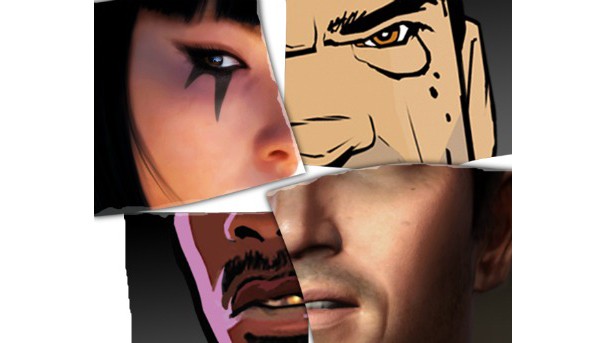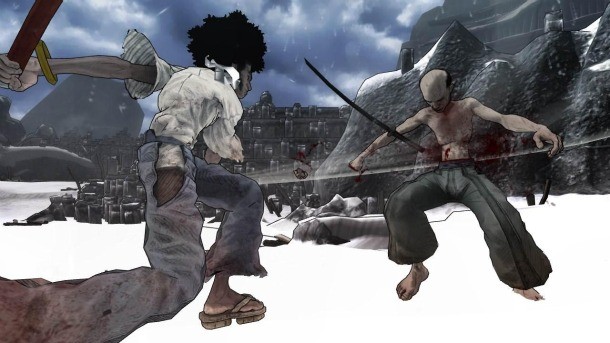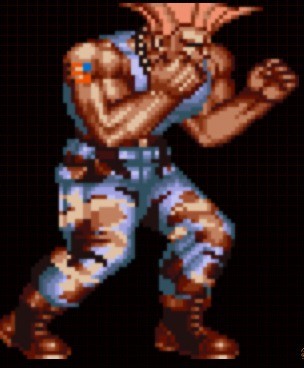Widening The Scope: A Look At Racial Diversity in Video Games

Note: This article originally appeared in the February 2011 issue of Game Informer (#214)
The topic of race can be an explosive one, and like in other media forms, who we are is not always reflected in what we see in the games we play. Our favorite hobby has a well-documented history of under-representing racial minorities in its characters. One study of the top 150 video games conducted in 2009 by Dmitri Williams, a social psychologist and assistant professor at the USC Annenberg School for Communication, revealed an over-sampling of white male characters and an under-representation of minority populations such as Latinos in games.
This isn’t just a problem on your TV screen; the absence of diversity can be a problem behind the scenes at your favorite developer as well. IGDA’s Game Developer Demographics Report in 2005 noted that of the almost 6,500 developers surveyed, the white and Asian demographics were overrepresented. A lack of diversity isn’t just a philosophical argument, but a situation that could affect what you play. Developers have a hard enough time creating compelling, successful content, so how do they untangle the intersecting lines of social justice, consumer desires, and developer responsibility and still come out with a game that’s a fun, inviting experience for everyone? We talked to some developers about racial diversity in video games and why this is an important topic for all gamers.
“If it ain’t fun, nothing else really matters,” says Morgan Gray, development director at 2K Marin. Gray’s comment is in regards to whether developers have a responsibility to make characters in games more racially diverse, but his answer is the same one developers everywhere evoke in any situation. If creating great games is the main duty of any developer, why does race come into the equation?
Video games’ status as an interactive medium gives it the capacity to tell a unique truth to its audience. Part of that truth is strained when all the player sees are straight, white, male protagonists, just as it does with bad AI or poor graphics. A lack of racial diversity in characters also limits the palette of stories for the player by restricting the kinds of experiences protagonists of different backgrounds can bring to the table – whether that’s race, gender, sexual orientation, or religious beliefs.
Building an avatar in games like Mass Effect is a natural tool to allow the player to create whatever diversity they want, including the chance to see themselves reflected in the game they are playing. Although this isn’t an option for every game, and it would be obnoxious and conspicuous to force minority characters everywhere just for the sake of it, it’s a step in the right direction even if there is still much work to be done to bring new stories and backgrounds to light.

Games like Mass Effect have character customization, but this is just a first step towards offering different experiences
Developing Diversity
One path towards getting more racial diversity in our video game characters is on the ground floor with the developers themselves. Similar to the question of whether some games can be realistic if everyone is white comes the problem of whether a predominately white game studio can create stories of different backgrounds without verging into the dangerous territory of stereotyping. Gray doesn’t believe this is an insurmountable problem. “If we look out to the broad entertainment world we can have hundreds of examples of people creating characters very much different than themselves. In fact, the ability to create a broad range of characters is something all talented creators do all the time, be it creating a character of different race, or gender, or social stature, etc. The issue of whether or not the characters created in this way end up being a stereotype or caricature is chiefly related to the creator’s skill level or intent.”
Hiring a diverse group of developers also has its benefits. Jason Della Rocca, former executive director of the International Game Developers Association (IGDA) and senior consultant at industry group Perimeter Partners, says that homogeneity of your staff can lead to a cycle of similar games being made. “The stereotypical teenage boys who grow up playing Halo and Call of Duty that then get a job in the industry and then try and make the next Halo and Call of Duty. How do you insert something else in there?”
In his experience, Della Rocca still sees a lack of diversity in studios, but the developers we talked to believed that an individual’s skill was the golden key into the industry. “From a designer’s perspective, I want a focused, intelligent, and hardcore gamer,” says David Robinson, producer on Namco Bandai’s Afro Samurai. “They could have purple stripes for all I care. Just please don’t suck. Be hard working and have a great attitude, because the job is tough enough already.”
A meritocratic environment is the ideal situation for any workplace, but as is often the case, finding that talent in the first place may require help. Morgan Gray believes people interested in becoming game developers often simply don’t know how. “Companies are looking for talent. I think when it comes to getting diversity – and let’s face it, racial diversity is less of an issue than gender diversity in this industry – it’s about letting people know about the opportunities. For the most part, ask anyone under the age of 25 how to get in the game industry and most respondents will say, ‘I don’t know.’”

Giving gamers what they want
At the end of the day, hiring practices and the work developers are doing to diversify video game characters will be wasted if gamers aren’t interested. There is no definitive answer on this point, but it’s likely that all anyone wants is a great experience, period. Although some think that games have to stick to what they do best – “leave the social studies to parents and public broadcasting,” says Robinson – others think that video games, like other mediums, can’t help but address it.
“Games are artistic expression,” believes Gordon Bellamy, chairman of the IGDA. “Some of it is super fun, some of it is serious. As leaders in entertainment, I think we’re also leaders in culture. There’s certainly a responsibility that game developers share. They are helping shape our culture. It’s not pure folly, this is art, this is how people are learning about a lot of topics…and they are super fun.”
Sean Ramjagsingh, producer of EA Sports’ NHL series, thinks that regardless of publisher or even public trepidation, if we want to see more racial diversity in video games and the topic of race handled effectively through our unique medium, it’s up to developers. At the end of the day consumers want a great experience, and he believes that this is something characters with different backgrounds can bring. “I think it’s on the developers,” he says. “If developers feel that they want to have racial diversity in their games, and they can provide a compelling experience around that and tell compelling stories based on those characters they’ve created, no matter what race they are, that’s what consumers want.”
No one solution to bring more racial diversity to video game characters makes sense for every game. Character creators are a great option, but even they aren’t without their problems. While they allow a cosmetic expression of race, a person’s background – and how race influences that – can’t be told by textures alone. If the industry is truly going to offer different experiences to players, developers must take chances and be creative and skillful enough to craft a game that has a story and characters that can confer understanding of different races, genders, sexual orientations, religions, etc. to all players, no matter who they are. This needs to be done in a way that is as true to the people it is representing as it is simply a great game that is so good people can’t ignore it.
Gamers and sales numbers will ultimately judge whatever ideas developers put forth, but first publishers have to green light projects. Della Rocca believes that the riskier the game, the harder time it might have getting made in the first place. “I can only speculate, but a lot of corporate decisions are made based on historical sales data. If I’ve got this great idea for Cows in Space, and then they look at the data and say, ‘Jeez, there’s no other Cows in Space games. There’s no history, there’s no competition, there’s no past examples, there’s just no data to support us giving you $20 million to make your crazy Cows in Space idea.’ And so the same sort of applies to the diversity question. It’s very much a chicken and egg problem.”
The path towards a more diverse industry is not clear, but if we do not make an attempt, we’ll get the same game experiences over and over again and not even understand what we’re missing. Video games thrive on new ideas, and this is exactly what’s at stake. “I think it’s great that our industry finds ways to celebrate diversity, the same way we continue to celebrate new ideas,” Bellamy says. “Because that’s what propels gaming forward. Therein lies some of the power of diversity. Its ability – just as it does in all areas of culture – to bring in new ideas, but also combine influences. It’s like Dead Rising 2 – the joy of combination is what it’s all about!”

The Tale of Afro Samurai
2009’s Afro Samurai (based on the manga by
Takashi Okazaki) featured a black samurai named Afro seeking revenge for
the death of his father. David Robinson, who produced the game, feels
that Afro’s race was handled perfectly. “In developing his character,
Afro was an homage to all the blaxploitation characters we grew up
with. And in my asking Namco Bandai to take in the franchise, I thought
it was a bold move. Few studios would have risked it. The Grand Theft
Auto series has plenty of black characters, but all seem to fall into
the same traps. From a studio perspective, Afro represented Namco Bandai
showing the world it understood and appreciated art for art’s sake. And
the combining of Japanese culture and something uniquely American was a
huge bonus.”
 Making Memories
Making Memories
We asked developers if there were any moments in their past that first made them aware of characters’ race in video games.
Gordon Bellamy (IGDA chairman)
“Black Guile [Super Street Fighter II: The New Challengers gave you the option to play Guile with an African-American skin – ed.]. Black Guile was the most incredible moment, and here’s why. There was Balrog, but Black Guile – in a game that we all loved – really spoke to, racially, ethnically, we can all be Guile. There’s a sonic boom in all of us! It was really empowering in having that choice.”
David Robinson (producer, Afro Samurai)
“Growing up black in the ‘70-‘80s, there wasn’t a lot that the media gave us (minorities) something to be proud of or to feel as if we belonged and were loved in this society. But seeing Magnum P.I.’s best friend, a black helicopter pilot, changed my life completely. I still remember the day my friend Joe Silva told me on the playground in 6th grade about this ‘cool show where there was a black guy who was a helicopter pilot.’ Back then if you saw something on TV as a kid, that meant it was achievable, real, something that had to be possible. That spring board of ‘you can do that too’ got me into college and flight school. My desk is covered in helicopters as I speak to you now because of T.C. from Magnum P.I.”

Get the Game Informer Print Edition!
Explore your favorite games in premium print format, delivered to your door.
- 10 issues per year
- Only $4.80 per issue
- Full digital magazine archive access
- Since 1991









